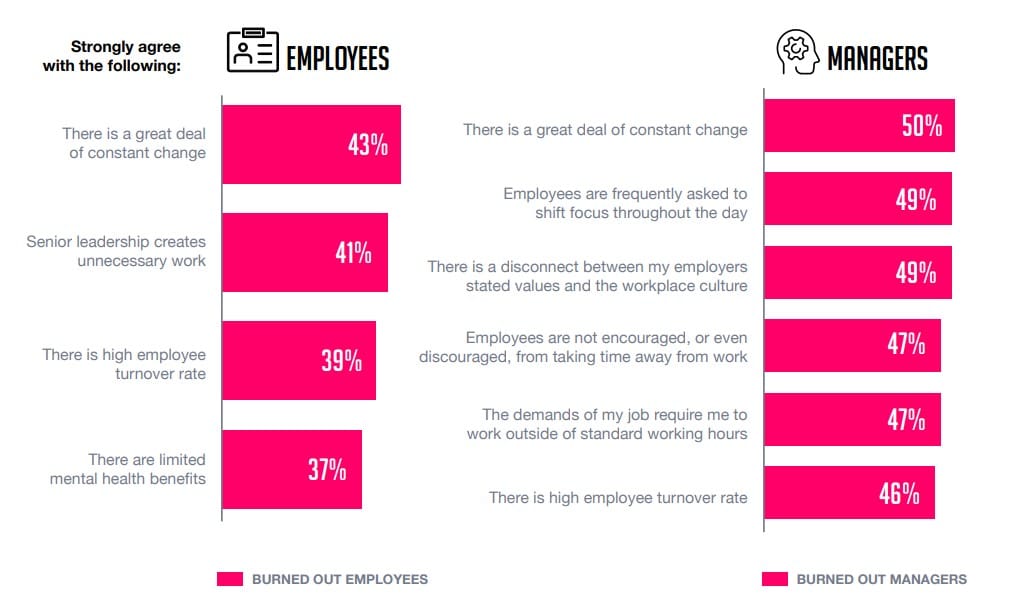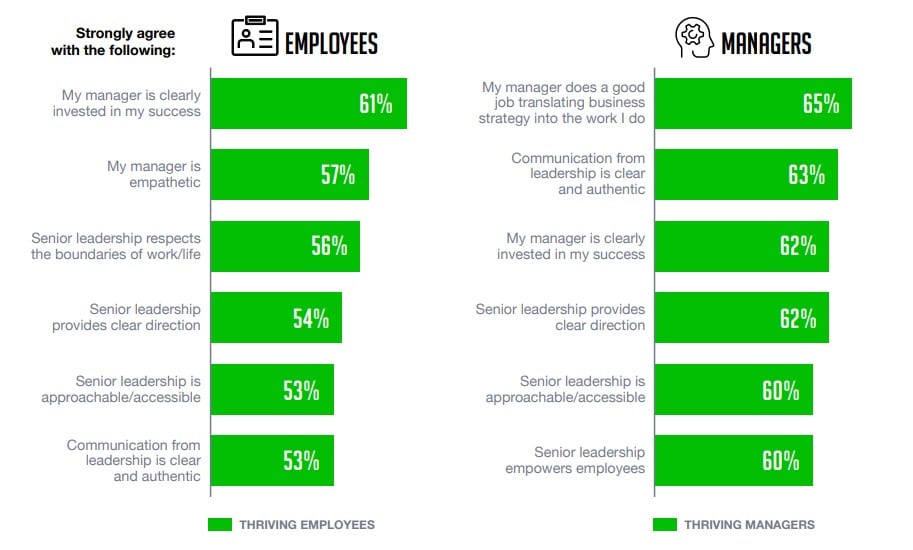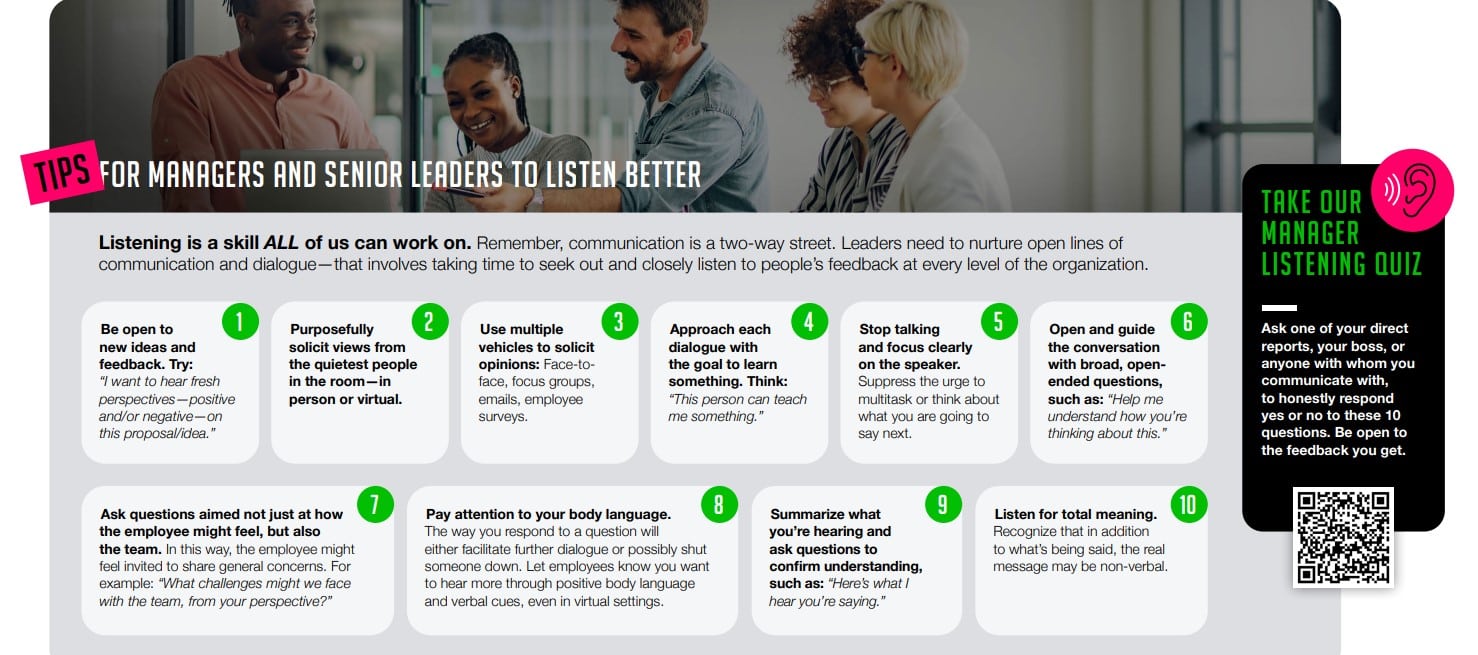The growing complexity in the workplace is starting to take its toll on both employees and managers—a torrid list of employee issues over the last year or so has had managers frequently pivoting to new approaches in search of harmony. The result is that this constant pace of change and a variety of new demands are contributing to widespread burnout among both groups today, new research from leadership and communications consultancy The Grossman Group reveals.
The firm’s new report, Burned Out & Checked Out, based on a Harris Poll survey of 2,086 employees, conducted over two waves in January 2024, was designed to gauge the extent to which American workers are thriving, burned out, or ambivalent, as well as what drives those emotional states—and how to lead them from those states to a thriving one. More than 75 percent of employees and 63 percent of managers report feeling burned out or ambivalent in their current position, but managers aren’t recognizing just how overwhelmed their employees feel, with 89% saying their employees are thriving, compared to the actual thriving figure of 24 percent—a more than 3-to-1 discrepancy.

The research finds the biggest driver of burnout for both groups is “a great deal of constant change.” Other factors include unnecessary work from senior leadership, employees frequently having to shift focus throughout the day, and high turnover rates that often lead to even more work for those left behind.
“These findings are a wake-up call. Clearly, employees are not okay and yet that’s often not recognized by senior leadership or the frontline leaders whose job it is to support and engage their teams,” said David Grossman, founder and CEO of The Grossman Group, in a news release.
The research underscores what many workplace experts have already observed about the workforce
While the descriptors vary—burned out, checked out, ambivalent, languishing, quiet quitting—they all point to employees wanting and needing more from leadership. Meanwhile, managers are struggling to respond to this major shift in employee needs and expectations and they deserve more support, Grossman said.
“Managers have been asked to lead employees through this permacrisis we find ourselves in today with empathy, and yet they still face greater responsibilities and heightened productivity pressure, often with fewer resources and smaller teams,” Grossman said. “All of this is happening without the personal support and flexibility they need to thrive.”

Highlights of the findings include:
Widespread burnout among employees and managers
- More than 75 percent of employees and 63% of managers report burnout.
- 58 percent of burned-out employees and managers strongly agree that they are mentally exhausted; 54 percent strongly agree that they feel overwhelmed in their current role.
- Top drivers of burnout with employees are constant change, unnecessary work, and turnover.
- Top burnout drivers for managers are constant change, their employees having to shift focus throughout the day, a disconnect between the company’s stated values and the workplace culture, and the fact that employees are not encouraged and sometimes even discouraged from taking time off from work. Another burnout driver for managers is that the demands of their job “require me to work outside of standard working hours.”
Discrepancy in perceptions of well-being
- Managers greatly overestimate employee well-being. 89% of managers report their employees are thriving; just 24 percent of employees say they are actually thriving.
The critical role of managers in moving employees from burned out and checked out to thriving
- For employees who say they are thriving, the top indicator is a manager who is “invested in their success.”
- Thriving managers also appreciate leadership being clearly invested in their success yet also identify other critical factors, including leaders who do a good job translating the business strategy into the work they do, and clear and authentic communication.
- The research identified a lot of leverage to gain by addressing manager burnout. At least for now, many managers continue to have a positive mindset about their work, even when they are feeling burned out.
Employee thriving being driven by very personal drivers, including these top factors:
- A manager invested in their success (61 percent)
- An empathetic manager (57 percent)
- Approachable senior leadership (53 percent)
Senior leadership plays an important role in building a thriving workforce overall
- Senior leadership that provides clear direction and authentic communication is a top indicator of thriving employees.
- Further, employees look to leadership to demonstrate their investment in employees with actions—a genuine focus on living the company values and demonstrations of an actual commitment to well-being (not just value statements and declarations).
Constant change as a primary burnout driver, with high costs for organizations
- Constant change is taking a toll, with employees and managers reporting that senior leaders are creating unnecessary work and forcing employees to shift focus throughout the day, inhibiting focus and productivity.
Heightened burnout indicators for younger generations
- Younger-generation employees are nearly 3x more likely than older generations to say that interpersonal conflict hinders working conditions and drives feelings of burnout (16 percent). They are more than 2x as likely than older generations to cite a toxic work environment (16 percent) and communication overload as contributing to burnout (17 percent).
A notable nuance is that what drives thriving for managers and employees is slightly different
For employees, the number one factor is quite personal, feeling that their manager is genuinely invested in their success and leads with empathy. When looking at ambivalent employees, the largest opportunity or gap to fill was around managers demonstrating personal investment in those employees.
While managers want to see a personal investment from leadership as well, the even bigger factor for managers is feeling that their leader does a good job translating business strategy into the work they do, as well as clear and authentic communication from leadership.

The findings point to the great potential to turn more ambivalent and burned-out employees to the thriving side—and there are important clues for leaders in how to accomplish this
The biggest indicators of thriving for employees and managers are feeling proud of their work, respected at work, motivated to go to work, and feeling supported by senior leadership.
“The responses of employees and managers demonstrate that leaders at all levels have a role to play in creating a stronger culture of thriving. Starting from the top and moving down through the ranks of managers, a focus on well-being should be purposeful and intentional, not left to chance,” Grossman said.
Grossman emphasized that it’s no longer enough to simply mitigate burnout. “The new north star for organizations needs to be building a thriving workforce,” he said.
He added that there are important bright spots in the data, especially the fact that even many burned-out managers report relatively positive feelings about their work overall. For instance, only 36 percent of burned-out employees feel proud of the work they’re doing, yet 50 percent of burned-out managers feel pride in their work. Furthermore, 46 percent of burned-out managers still feel respected at work and 39 percent feel they are reaching their potential.
“This signals to me that burned-out managers want their organizations to do well and feel that they are growing personally, yet they are exhausted and pushed to their limits,” Grossman said. “There’s opportunity there. When burned-out managers get more support, a more reasonable workload, and more flexibility, they can be re-energized and move from burned out to thriving.”
The bottom line
The research provides important insights into the troubling emotional state of today’s employees and managers, confirming what’s been widely understood as a crisis of disengagement in much of today’s workforce.
Still, the research underscores that there are proven tactics for moving many employees from disengaged to thriving, with the keys being stronger manager/employee communication and relationships, and a healthy respect for employee well-being. When employees aren’t feeling supported, they not only become a turnover risk; they drag down the overall company culture, and a positive culture is essential for any successful organization.








